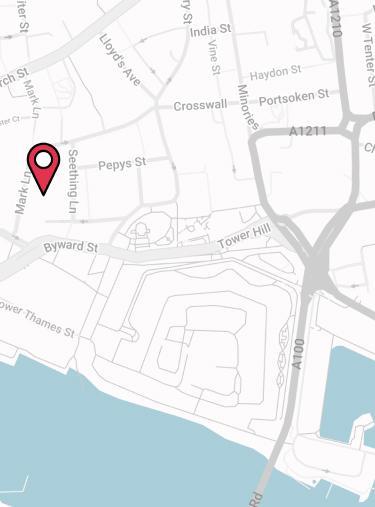When it comes to workplace pensions and how it’s taxed, it can get confusing. This is because schemes can be set up in various ways, all of which are taxed differently.
It’s worth trying to get your head around, though. If set up in the right way, your workplace pension scheme is a tax-efficient benefit for you and your employees.
To help explain the ins and outs of how workplace pensions are taxed, we’ve put together this short guide.
Workplace Pensions Are Mandatory
By law, all UK employers must provide a workplace pension scheme and auto-enrol eligible employees.
Auto-enrolment was introduced off the back of the 2008 pension reforms. The government set up the initiative to get more people saving for their retirement.
Prior to auto-enrolment, employees had the choice of opting into a workplace pension. Now however, they must be automatically enrolled by their employee. This must be done on day one of an employee joining the company.
Once enrolled, your employee makes monthly contributions into the scheme and so will you.
SPECIALIST TIP 🤓
Employers legally have to carry out a number of duties to ensure the workplace pension is run correctly. Failure to comply could result in your company being fined, so it’s important to fully understand what these are.
Minimum Workplace Pension Contributions
Each month, auto-enrolment requires a total contribution of 8% of the employee’s qualifying earnings.
Employers pay at least 3% of this and the remaining 5% is paid by your employee. Some employers choose to contribute more and allow their employees to reduce their contribution. This can be done, however, the total minimum contribution must be 8% as shown in the below examples.
How Is A Workplace Pension Scheme Taxed?
How your workplace pension is taxed will depend on how it’s set up. There are three methods to choose from:
- Relief At Source
- Net Pay
- Salary Sacrifice.
Each has a different way of paying contributions, which is why they are taxed differently. It’s important to understand how each method works, as it will affect how tax relief is provided.
How Workplace Pension Tax Affects Employees
Relief At Source (RAS) & Net Pay
Both relief at source and net pay arrangements enable your employees to enjoy tax relief.
With relief at source, employeescontributions are taken from their salary after tax and National Insurance has been paid. Contributions are paid directly to the pension provider, who then tops the payment up by 20% when it’s invested into the pension fund. They claim this 20% tax relief back from the government.
Let’s say an employee earning £3,000 a month contributes 5% (£150) into their pension. They will pay £120 (80%) a month from their net pay. They will then get another £30 (20%) on top as as tax relief from the government which gets added when their contribution is paid to the provider.
![]()
Net pay arrangement
This is where is can get confusing. Although its name suggests otherwise, contributions on a net pay arrangement are taken from an employees gross salary. Not their net pay.
By taking contributions in this way, an employee’s gross income is reduced and the amount of tax they pay is lower. So, they receive tax relief on their contributions straight away.
Let’s take the same employee from above earning £3,000 a month and contributing 5%. The £150 (5%) will be taken from their gross salary, reducing it to £2,850. As the £150 isn’t taxed, the employee will save £30 (£150 x 20%). It’s important to note that with this set up, an employee will still be charged National Insurance on their full monthly salary (£3,000).
![]()
Salary Sacrifice
Contributions made via salary sacrifice are done in a similar way to net pay. Each month an employee’s pension contributions will come out of their gross salary. But what’s the difference?
Unlike with net pay, salary sacrifice requires an employee to contractually agree to lower their gross salary. The amount they sacrifice is then exchanged for pension contributions.
By lowering their salary, employees will reduce their tax bill, as contributions will be charged on the lower amount. This gives them immediate tax relief. Not only this, they will also make National Insurance savings, as this too will be calculated based on their lower salary.
SPECIALIST TIP 🤓
The amount of tax relief an employee gets depends on their tax bracket. For higher rate taxpayers, they can claim tax relief through an annual tax return via HMRC Self Assessment.
How does a workplace pension work if an employee doesn't pay tax?
If an employee doesn’t reach the tax threshold of £12,570, they can still contribute to a pension. But they may not receive tax relief. Whether they do depends on how the workplace pension scheme works.
In a net pay arrangement, employees only get 20% tax relief if they pay tax.
With the relief at source method, employees get tax relief straight away even if they aren’t a taxpayer. This is at a rate of 20% on the first £2,880 paid into their pension savings each tax year.
However, under salary sacrifice, an employee that doesn’t pay tax may lose the 20% top up in their pension pot.
How much tax relief does an employee get via a workplace pension?
There are limits on how much an employee can contribute to their pension scheme and still get tax relief. Employees have an annual allowance. This is £60,000 for most people, or up to their annual income amount if they earn less than £60,000.
The annual allowance includes the employee’s, employer’s, and the government’s contributions. Contributions above the limit may be subject to a tax charge.
How is an employee's workplace pension tax when drawing an income at retirement?
Employees can typically take 25% of any pension pot tax free. However, the remaining 75% will be taxed in the normal way.
If an employee has a pension pot worth £50,000, they could take £12,500 and pay no tax. If they then take the other £37,500 in a single year (and had no other income), another £12,570 would be tax free (this is their personal allowance). This leaves £24,930 subject to income tax at 20 per cent.
Do employee pension contributions count towards annual allowance?
An employers pension contribution does count towards the annual allowance of £60,000. The employee’s and governments pension contributions also count towards this.
How Are Employers Affected By Workplace Pension Tax?
Employers aren’t liable to pay any tax on the contributions maid. However, how your workplace pension is set up can have an impact on your overall tax and National Insurance bill.
Employer Tax Savings
An employer’s pension contributions are an allowable business expense. This is the case if your workplace pension passes the ‘wholly and exclusively’ test. This confirms if contributions are solely for business purposes.
If they are, as contributions come from your pre-taxed profits, these aren’t assessed for corporation tax. This provides extra tax relief, as your company’s corporation tax bill reduces.
This rule applies to each tax relief method: relief at source, net pay, and salary sacrifice.
Employer National Insurance Savings
If your workplace pension is set up using salary sacrifice, you could enjoy paying less National Insurance too.
As employees sacrifice part of their salary in exchange for contributions, their gross pay reduces. This means employers then only have to pay National Insurance on the lower amount.
Example Of Savings
We’ve got an example of how much you could save below. This is based on:
- An employee earning £35,000
- Sacrificing £1,750 (5%) for pension contributions in a year.
This is an example based on just one employee. The more staff you have in a salary sacrifice workplace pension scheme, the higher your potential savings.
To illustrate these, we’ve provided some more examples below.
As you can see, the more staff in the workplace pension scheme, the more you save on National Insurance Contributions (NIC).
It’s up to you what you do with these savings. You can:
- Invest them back into the business to reduce overheads
- Pass back 50% of the savings to employees
- Pass 100% of the savings to employees.
Compare Workplace Pension Providers And Get Specialist Advice
Choosing a pension scheme and figuring out the tax rules can be a challenge. Pensions are complex, as is tax, especially when there are several ways to set up your scheme.
However, pensions are essential for your employee’s retirement planning. At Drewberry™, our pension specialists are well versed in tax regulations. We can help you better understand the most tax efficient ways of setting up your scheme.
If you would like advice from our pension specialists, don’t hesitate to contact us by calling 02074425880 or via email at help@drewberry.co.uk.
Why Speak to Us?
Employee benefits can be a headache. But our specialists do this day-in, day-out, offering first class service when you need it most. Here’s why you should talk to us:
- Award-winning independent employee benefits consultants, working with leading UK insurers and benefit providers
- Assigned specialist on hand to help – every step of the way
- 4067 and growing independent client reviews rating us at 4.92 / 5
- Authorised and regulated by the Financial Conduct Authority. Find us on the financial services register
- Claims support when you need it most.












